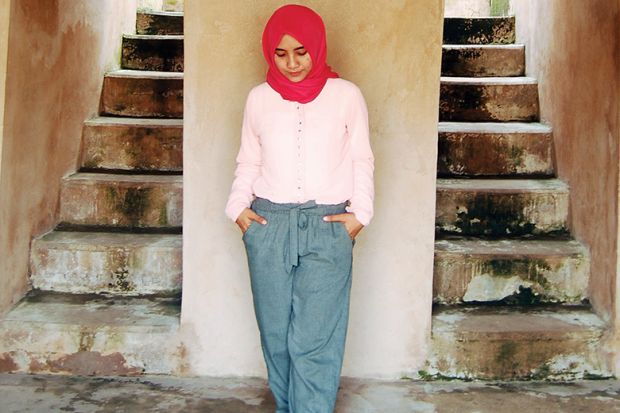Elizabeth Bucar is a liar: she claims to be as bad at fashion as the next stereotypical academic who favours “comfort over appearance” when actually her detailed reading of Muslim pious fashion is crafted in a pithy fashion-speak that would be a credit to Vogue. I defy anyone not to be beguiled by her generous-hearted yet penetrating observation of pious fashion in Indonesia, Turkey and Iran.
Her dissimilation allows her to take the reader – positioned as non-Muslim, non-expert – on a guided tour, invoking the stereotypes she wants to unpick: “Muslims’ lives, it turns out, are not completely dictated by religious dogma or law. In fact, they are not all that different from non-Muslims’ lives.” Outlining how young Muslim women in Tehran, Yogyakarta and Istanbul shape urban cultures of modest dress, Bucar uses interviews with consumers, designers, retailers and journalists alongside ethnographic vignettes of outfits to examine the presumptions that modest dressing can’t be fashionable, and fashion can’t be faithful.
These challenges come from a globalised fashion industry which has until recently regarded Muslim pious fashion as antithetical to secularised modernity and from co-religionists who regard fashionability as potentially corrupting to faithfulness. In contrast, as Bucar discusses, building on the work of Saba Mahmood and others, styling the modest body can be integral to the cultivation of a pious disposition whose outward expression may act as a form of da’wa, “making this style of clothing more attractive to other Muslim women” and making “Islam more inviting to non‑Muslims”.
Historically specific local aesthetics determine variations. Batik hijabs in Indonesia are valorised for their pre-colonial cultural authenticity. First lady Hayrünnisa Gül creates a signature style of mono-colour outfits in Turkey. Yet with Gül pilloried in the secular Turkish style media for failed fashion, Bucar emphasises that the details of pious embodiment are everywhere subject to scrutiny by other pious dressers for whom aesthetic errors are “presumed to be outward manifestations of moral failures”.
I liked the book most when Bucar’s own specialism in religion and philosophy extended the debate. I have often heard Muslim women defend modest fashion from charges of vanity on the grounds that “Allah loves beauty”; Bucar traces this back to Ibn Sina’s (Avicenna) dual articulation of “sensible beauty” and “intelligible beauty”. For those adhering to the ethos of modesty, “pious fashion done well embodies both sensible and intelligible beauty: sensible because it is pleasing to look at, intelligible because it is part of God’s plan”.
With increasing numbers of Muslim women in Muslim-minority countries not wearing the hijab, it will be fascinating to see how this insight can be applied to understanding the personal and political significance of other forms of pious self-fashioning.
Reina Lewis is professor of cultural studies, London College of Fashion, University of the Arts London, and author of Muslim Fashion: Contemporary Style Cultures (2015).
Pious Fashion: How Muslim Women Dress
By Elizabeth Bucar
Harvard University Press, 248pp, £23.95
ISBN 9780674976160
Published 29 September 2017
POSTSCRIPT:
Print headline: Lifting the veil on the veil
Register to continue
Why register?
- Registration is free and only takes a moment
- Once registered, you can read 3 articles a month
- Sign up for our newsletter
Subscribe
Or subscribe for unlimited access to:
- Unlimited access to news, views, insights & reviews
- Digital editions
- Digital access to THE’s university and college rankings analysis
Already registered or a current subscriber? Login




